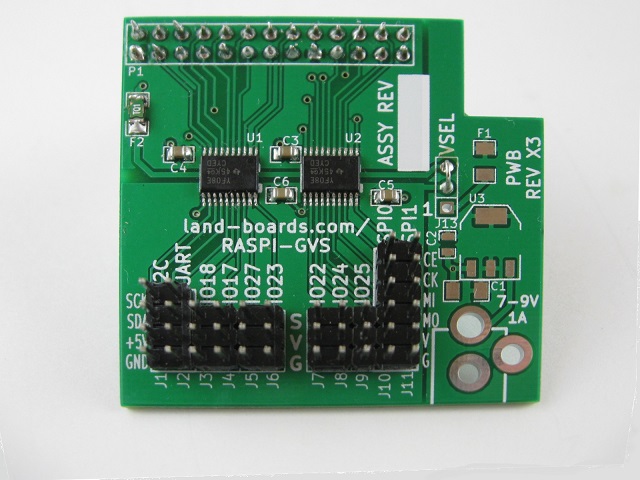Difference between revisions of "RasPi-GVS"
Jump to navigation
Jump to search
Blwikiadmin (talk | contribs) |
Blwikiadmin (talk | contribs) |
||
| Line 1: | Line 1: | ||
[[File:tindie-mediums.png|link=https://www.tindie.com/products/land_boards/5v-io-card-for-the-raspberry-pi-raspi-gvs/]] | [[File:tindie-mediums.png|link=https://www.tindie.com/products/land_boards/5v-io-card-for-the-raspberry-pi-raspi-gvs/]] | ||
| + | |||
| + | <video type="youtube">URcMiLRpHKg</video> | ||
[[File:RasPi-GVS-5221-xformed-640px.jpg]] | [[File:RasPi-GVS-5221-xformed-640px.jpg]] | ||
Revision as of 02:59, 30 December 2019
Features
- Daughtercard to the Raspberry Pi (you supply the Raspberry Pi)
- 3.3V to 5V bidirectional voltage translators on GPIO (General Purpose Input/Output) lines
- (7) 5V GPIO lines on GVS connectors
- (2) 5V SPI interfaces (can be used as 5 GPIO lines)
- (1) 5V UART (serial port) interface
- (1) 5V I2C interface (can be used as 2 GPIO lines)
- GPIO_4 enables/disables the voltage translators
- Resettable Fuse protection on the 5V power lines
- 7-9V input voltage on the Power Supply connector (option) which has a regulator that can power the GVS connectors (within thermal limits of the regulator) removing any 5V load from the Raspberry Pi itself
- Jumper to select power for GVS (allows the GVS connectors to be powered from either the on-board regulator (option) or powered from the Raspberry Pi)
- 49x49mm card form factor

